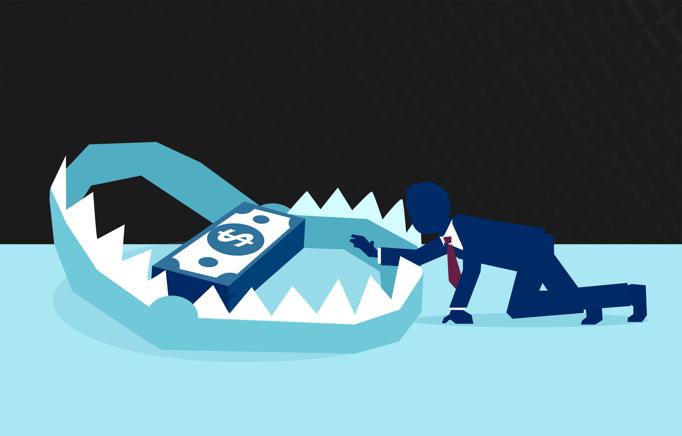What is a bear trap
العملات المشفرة للمتقدمين
مقالات أخرى
A bear trap is a market phenomenon that arises when a cryptocurrency's performance shows deceptive signs of an upward price trend reversing. In other words, the asset's price behaviour leads some investors to believe that the price is falling. Following the trap, the cryptocurrency's price swiftly increases, trapping negative traders.
A bear trap is a technical pattern that happens when the price movement of a stock, index, or other financial instrument wrongly implies an upward trend reversal. Institutional traders, according to a technical expert, strive to set up bear traps to entice regular investors to take long positions. If the institutional trader succeeds and the price momentarily rises, it allows the institutional traders to offload greater stakes of stock that would otherwise drive prices lower.
There may be many buyers eager to acquire equities in particular markets, but few sellers prepared to accept their offers. The purchasers may raise their bid—the amount they are ready to pay for the stock—in this situation. As a result of the imbalance between purchasing and selling pressure, more sellers will likely enter the market, and the market will rise.
When stocks are purchased, however, they instantly generate selling pressure since investors only benefit when they sell. As a result, if too many individuals buy the stock, the purchasing pressure will decrease, and the potential selling pressure would grow.
Institutions may force prices lower in order to promote demand and raise stock prices, making the markets appear pessimistic. This leads to stock sales by inexperienced investors. Investors rush back into the market when the stock price decreases, and stock prices climb in response to the increased demand.
While you could see similarities between bear traps and short selling, they are different.
A bear is a financial market investor or trader who feels that the price of a security is likely to fall. Bears may also assume that a financial market's general trend is deteriorating. A bearish investing strategy seeks to profit from an asset's price drop, and a short position is frequently used to carry out this approach. A short position is a trading strategy in which a trader uses a margin account to borrow shares or contracts of an asset from a broker. The investor sells the borrowed instruments and then buys them back at a lower price, profiting from the reduction.
The chance of being trapped in a bear trap increases when a negative investor misidentifies a price decrease. To avoid losses, short sellers are forced to cover bets when prices climb. A subsequent spike in purchasing activity might spark even more upside, feeding the upward momentum. The increasing speed of the asset tends to lessen once short sellers acquire the instruments necessary to cover their short bets.
When the value of an index or stock continues to climb, a short seller risks maximizing the loss or triggering a margin call. Stop losses can be used to limit the harm caused by traps when market orders are executed.


